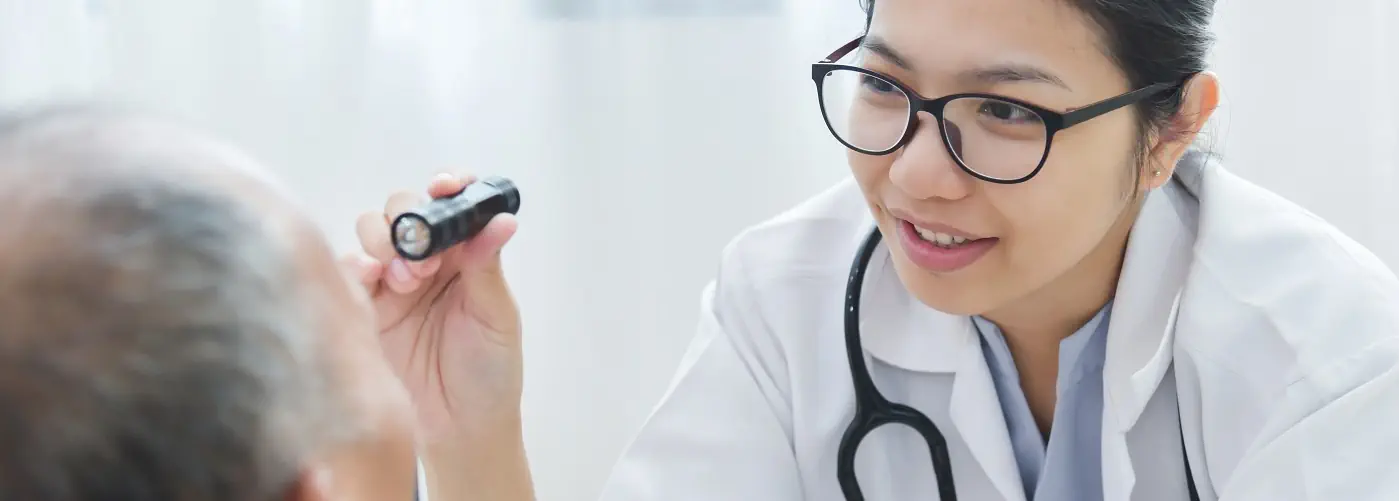
An autoimmune disorder is a health condition in which the body's immune system mistakenly attacks it.
The immune system is essential for the body to safeguard against disease-causing bacteria and viruses.
Usually, the body's immune system can quickly identify between foreign and own cells. However, in the autoimmune condition, the system mistakes body parts such as skin and joints as foreign and releases specific proteins called antibodies to attack the healthy cells.
One such autoimmune disease is Graves disease (also known as thyroid eye disease) affecting the eyes, skin, and thyroid.
The exact prevalence of this disease is still unknown and it is considered a rare disease in the medical world.
Studies have shown that 2.9 per 100,000 males in the general population and 16 per 100,000 females in the general population are affected by thyroid eye disease.
This is an autoimmune condition in which the immune system causes swelling and inflammation in the eye. It also causes the production of fat and muscle tissue behind the eye.
Also known as Graves’ ophthalmology or Graves’ eye disease, this is a condition in which the body's immune system produces antibodies that activate receptors in the thyroid gland.
This then results in too much thyroid hormone in the body. In addition, the immune system's response against the thyroid gland can affect the eye, causing thyroid eye disease.
This will cause the eyelids and the eyes to become swollen, red, and bulging out.
It also causes swelling and stiffness of the eye muscles, making it difficult to move in a line resulting in double vision.
Thyroid eye disease, also commonly known as TED, is often associated with hyperthyroidism and takes up about 90% of the cases.
While the disease is a result of malfunctioning of the thyroid gland, TED is also sometimes seen in people who have no evidence of thyroid dysfunction. Additionally, it may also happen to people who have Hashimoto's disease.
Most thyroid patients won't generally develop this disease, and even if they do so, the symptoms are mild. However, if you are a regular smoker, you might experience more severe symptoms.
As it is an autoimmune condition, anyone can develop this disorder. Let us look at some of the risk factors that increase the likelihood of contracting this disease.
The initial symptoms of thyroid eye disease include irritation, redness and discomfort of eyelids and eyes. In some instances, sweat will form around the eyes.
Symptoms can appear as early as six months. These may include:
Thyroid eye disease may cause secondary glaucoma and leads to blindness.
If you notice any symptoms mentioned above, it is best to have an immediate eye examination to avoid any long-term eye damage.

If you are already diagnosed with thyroid hormone issues, the doctor may want to conduct a periodic physical examination to check for any signs of TED.
If he suspects the presence of the disease, he may conduct further tests such as:
There are two main stages of thyroid eye disease. They are:
Active or acute phase : This stage is marked by inflammation of the eyes and may last for six months to two years. The symptoms may suddenly worsen over time.
Inactive phase : As the name suggests, the inactive phase occurs when other symptoms and inflammation have subsided. It does not mean that the disease will not appear again. Thyroid eye disease is an ongoing condition and requires prompt medical attention.
There are two stages of thyroid eye disease treatment.
The initial or the active phase is the stage when the disease should be monitored carefully. The treatment methods will be primarily focused on treating double vision, preserving eyesight and integrity of the cornea.
If the eyes get too dry, artificial tear drops are used during the daytime and gels and ointments are used at night.
Immunosuppressants are prescribed to slow down the immune system producing abnormalities.
In the second phase, surgery is often advised to reduce eyelid retraction and correct double vision.
The eyelids can be returned to a normal position within the socket with surgery.
To prevent TED from getting worse, one can follow the following measures.
If you experience any symptoms mentioned in this article, make sure to seek immediate medical attention.
Learn about the various treatment options and Ophthalmology services available at Gleneagles Hospitals, Malaysia.
Margaret E Phillips, Mehrak M Marzban, Sajeev S Kathuria(12 Jan 2010)Treatment of thyroid eye disease, Available at https://pubmed.ncbi.nlm.nih.gov/20842491/ [Accessed 13 Mar 2022]
César A. Briceño, Shivani Gupta and Raymond S. Douglas(1 Jul 2014)Advances in the Management of Thyroid Eye Disease, Available at https://journals.lww.com/internat-ophthalmology/Citation/2013/05330/Advances_in_the_Management_of_Thyroid_Eye_Disease.10.aspx [Accessed 13 Mar 2022]
Alankrita Muralidhar, Sima Das and Sweety Tiple(1 Aug 2020)Clinical profile of thyroid eye disease and factors predictive of disease severity, Available at https://journals.lww.com/ijo/Fulltext/2020/68080/Clinical_profile_of_thyroid_eye_disease_and.30.aspx [Accessed 13 Mar 2022]
Tom Cawood, Paul Moriarty and Donal O'Shea(14 Aug 2004)Recent developments in thyroid eye disease, Available at https://www.bmj.com/content/329/7462/385 [Accessed 13 Mar 2022]
Esra Şahlı and Kaan Gündüz(1 April 2017)Thyroid-associated Ophthalmopathy, Available at https://www.ncbi.nlm.nih.gov/pmc/articles/PMC5384127/ [Accessed 13 Mar 2022]
Colm McAlinden(10 Dec 2014)An overview of thyroid eye disease, Available at https://www.ncbi.nlm.nih.gov/pmc/articles/PMC4655452/ [Accessed 13 Mar 2022]

Wait a minute